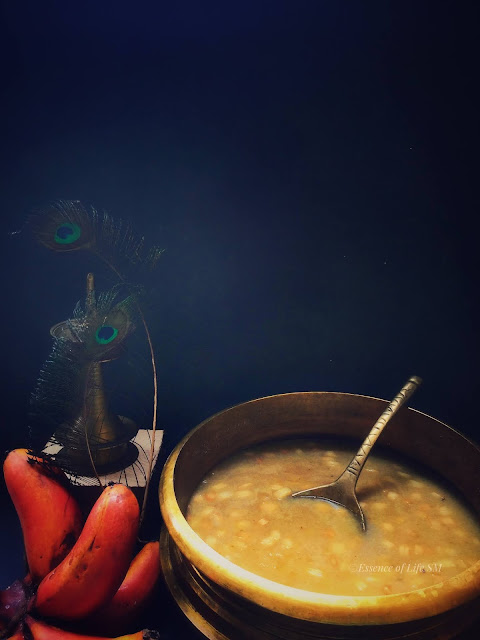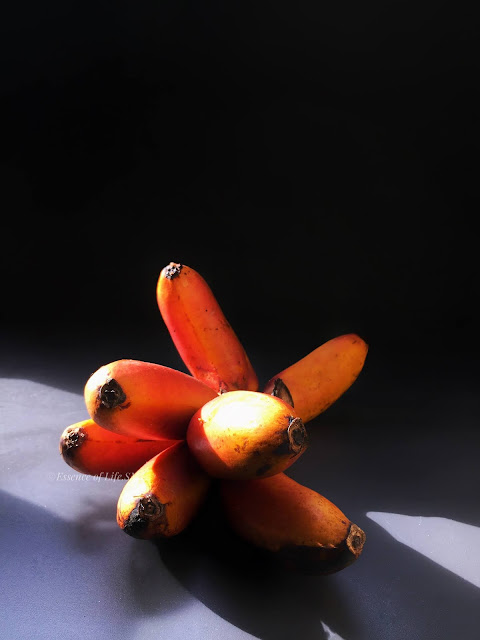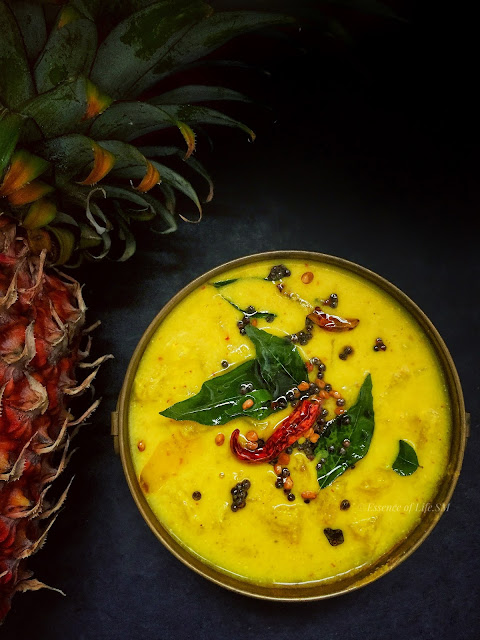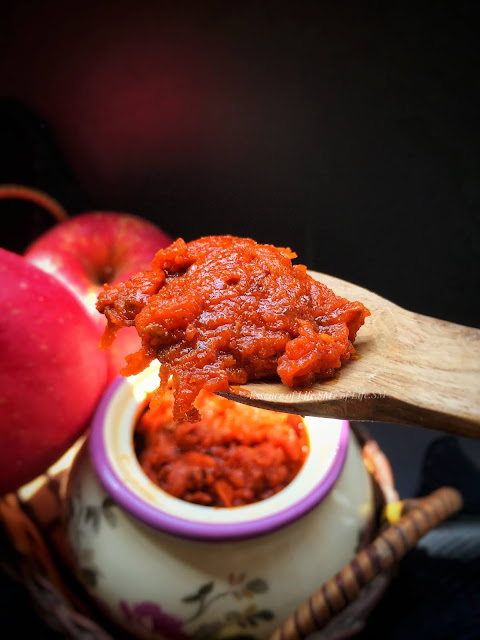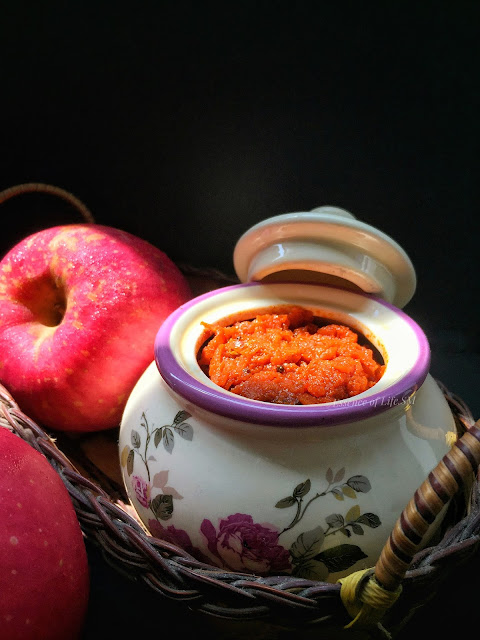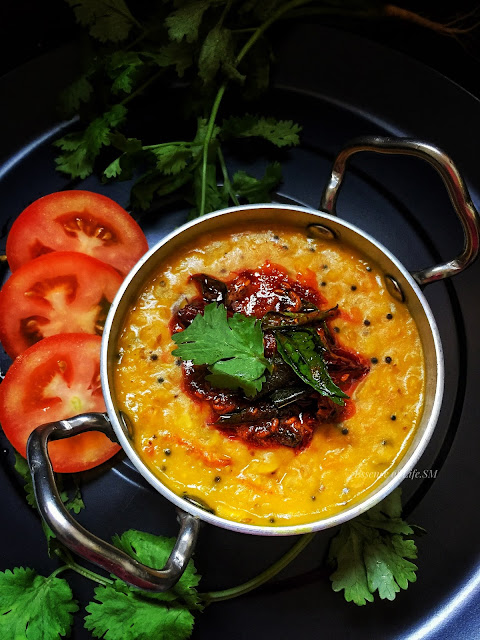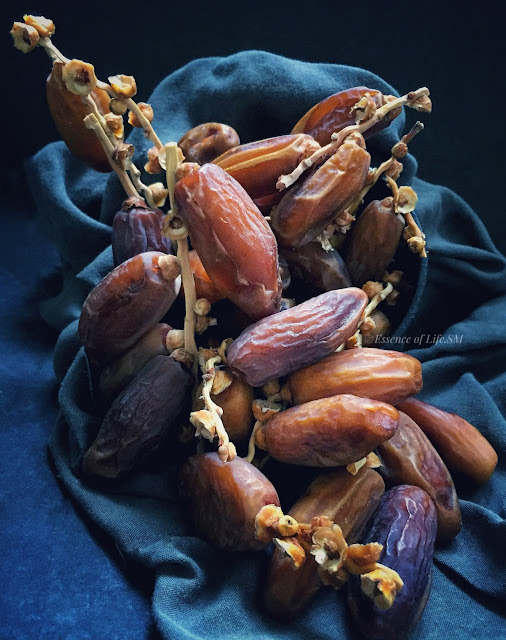 |
| DATES |
Only when I started living in Malaysia, I noticed that large batches of Dates were sold during Ramadan Season. The relevance never realized before and the significance of Dates during Ramadan fasting was a new learning for me then. Since the fruit was discovered, which can be traced back to almost 5320 BC., it has been known for its healing properties. Since then, Dates have served as a staple for people in the Indus Valley, Middle East and North Africa. Mainly cultivated in these regions & in tropical regions.
Dates are highly beneficial due to the innate composition of macronutrients and many other healthy elements. Dates are known for their high content of natural sugars. It’s interesting to notice that dried dates have a higher calorie content when compared to the fresh fruit. The calorie content of Dates is one of the most important fact that makes this Middle East fruit a world favourite.
It
is said that Prophet Muhammad broke fast with three Dates and water.
And from thereon Dates has been associated with Ramadan(Ramzan). The
fruit is mentioned more than 20 times in the Quran. Muslims around the
world, follow a religious tradition of serving Dates (Tmar) at their
Ramadan Iftar table. With many making it a point to break their fast
with Dates. Dates are not only associated with Ramadan, but preferred by
many Muslims for Tahneek, the tradition of rubbing something sweet into
the mouth of a newborn.
Apart from the tradition and cultural significance, the fruit provide a quick boost of energy for the meal to come. From the day-long fasting, your body may get deprived of energy and dehydrated. Low blood sugar, headaches and lethargy can be common manifestation of the fasting. In such a scenario, dates are the perfect way to break the fast as it activates the body to take in the inflow of food, by helping to secrete digestive juices. Also, being rich in natural sugars, dates provide an instantaneous energy boost. Dates are full of carbohydrates and fiber. Fiber gives the body a fuller feeling and prevents it from feeling hungry. The high fiber also keeps the bowel movements regulated, despite the drastic change in meal patterns.
"DATES - THE FRUIT OF THE PARADISE"
Names of Dates in other Languages:
Tamil -Perichampazham
Malayalam - Eendhapazham
Kannada - Kharjoora / Eachalu
Telugu - Kharjoora / Kharjoora Pandu
Tulu - Karjoora
Hindi - Khajur
Marathi - Khajur / Kharik
Gujarati - Khajur
Bengali - Khejoor
Konkani - Khajjoor / Kaajjuru
Oriya - Khajura / Khajuri
Punjabi - Khajur
Assamese -Khezur
Sinhalese -Rata Indhi
Arabic - Tamur(Tmar)
Bahasa Melayu - Kurma
DATES - NUTRITIONAL VALUE & USES
Dates are the fruit of the date palm tree, which is grown in the Middle East, North Africa & in many tropical regions around the world. Mostly Dates are sold in dried form. It can be eaten fresh too. A wrinkled skin indicates they are dried, whereas a smooth skin indicates freshness. Dates have an excellent nutrition profile.
Dates
can be eaten fresh or dried, but it is mostly sold & eaten in dried
form. Dried Dates have higher calorie content than a fresh fruit.
Most
of the calories in Dates come from Carbohydrates & a very
small amount of Protein. Dates retain lots of Vitamins and Minerals.
It
is also rich in antioxidants which help protect cells from damage. Dates
are a rich source of minerals like Iron, Calcium, Potassium,
essential Amino Acids and vitamin A, B, C & D. It is a good source
of dietary fiber too.
Dates are highly rich in Micronutrients like Selenium, Manganese, Magnesium & Copper.
HEALTH BENEFITS OF DATES

DATES

Dates are rich in nutrients and hence are highly beneficial to health too. Dates have been used as a Food & as a Natural Medicine for years.
Highly Nutritious:
Dates
are packed with essential Vitamins & Nutrients, which can be
extremely helpful for our overall health. Dates are also rich in Fiber
& Carbohydrates which makes it one of the healthiest dry fruits.
High antioxidant content in Dates & with anti-mutagenic &
anti-carcinogenic properties, it is believed to help prevent Cancer.
Rich in Vitamins:
Dried or fresh dates are good source of Vitamins A, B1, B2, B3, B5, C & D. These essential Vitamins ensure optimum health to our body. The need for these Vitamins can be easily met by including Dates in our daily diet.
Rich in Antioxidants:
Dates are known for its high concentration of anti-oxidants.
- Carotenoids: Carotenoids are known for their ability to significantly reduce the chances of macular degeneration which can be highly beneficial for a Healthy Heart.
- Flavonoids: Flavonoids are known for their anti-inflammatory properties, and it is also known for helping to reduce the effects of Diabetes. Flavonoids are also beneficial to your brain and also helps to reduce the risk for brain degenerative diseases such as Alzheimer’s. Flavonoids can also help in reducing the risk towards certain types of Cancer too.
- Phenolic Acid: Phenolic
acid is
mainly known for its anti-inflammatory properties. It is believed in
reducing the risk of developing cardiac issues and can also help in
reducing the
risk towards certain types of Cancer too.
Treats Anemia:
Dates are an excellent source of Iron & Folic Acid. Folic Acid
helps the body to absorb Iron and helps in increasing the Red Blood Cell
count. Dates are very helpful in treating and preventing Anemia
and is also believed to treat Sickle Cell disease.
Regulate Blood Sugar Levels:
Dates help to reduce the amount of glucose in the blood, as well as
sugar & protein in the urine. Alternatively, increasing the hemoglobin levels. Dates affect
insulin activity of the body and balance blood sugar levels helping to
reduce some diabetic symptoms. Dates are successful at reducing
lipid and glucose levels. It helps in regulating oxidative stress in diabetic
patients, which means it lowers blood sugar and cholesterol & also improves
protection against cell damage.
Lowers Cholesterol:
Dates are a good source of antioxidants which helps to reduce LDL(bad
cholesterol level) and triggers the increase of HDL(good cholesterol).
Increase in HDL protects our body from heart disease and
atherosclerosis. Try to incorporate Dates in your daily diet.
Aids Weight Loss:
Dates can be effective in reducing and controlling weight gain.
Vitamin B present in Dates help with smooth and efficient
digestion and can assist the body when converting food into energy,
rather than storing it as fat. Daily consumption of Dates enhances digestion, reduces fat and cleanses the intestine helping in
reducing excess weight.
Treats Bacterial Infections:
Dates are known for its antibacterial, antifungal, and antimicrobial
properties, which helps combat infections caused by Salmonella, Rhizopus, E. coli &
Pneumonia. Dates
are helpful in preventing Microbial Infections. Date Plant extract has
also proven effective in reducing the side effects caused due to
powerful medicines. Dates have successful defensive capabilities
against microbes.
Improves Brain Function:
Consuming
Dates helps reduce issues related to
anxiety disorder and also helps in boosting memory. It is also
effective in preventing degenerative diseases such as Alzheimer's &
also helps in the overall improvement of your brain function.
Preventing & Treating Cancer:
Presence of beta D-glucan in Dates has proven to be
advantageous in promoting an antitumor activity within the body. High concentration of antioxidants in Dates helps in
reducing the activities of free radicals and thereby reduces the risk of Cancer and can significantly help in
the reduction of occurrence of benign tumours too.
Help fight against Diabetics:
Dates have the ability to increase the production of Insulin & also help reduce the rate of absorption of Glucose from the intestine. This helps to reduce Blood Glucose Level, which has proven to be beneficial for people suffering from Diabetics.
Promotes Bone Health:
Dates
are highly rich in Micronutrients like Selenium, Manganese, Magnesium
& Copper. Regular consumption of Dates meets the need for these
micro-nutrients & also ensures a good bone health. It has also
proven beneficial in treating bone conditions such as Osteoporosis.
Strengthens the Nervous System:
Dates are rich in nutrients like Potassium, and it has very low levels of Sodium, which makes it good for Neurological health. Potassium in Dates makes communication between the nerve cell easier. Low Sodium contents proves to be beneficial in lowering Hypertension.
Good Skin:
Dates have high concentration of vitamin C & vitamin D which ensures a healthy skin. It helps to keep skin well nourished and improves the elasticity of the skin. It also helps in maintaining a heathy balance of Melanin in skin. Vitamin C & D also helps get rid of wrinkles and also helps you to get a healthy glowing skin.
Prevents Hair Loss:
Dates are a good source of Iron, which makes it beneficial for your hair. Rich Iron content in Dates ensures that the blood flow remains strong. The increased flow of oxygen facilitates the growth of new hair, reduces the rate of hair fall and also keeps the scalp nourished.
Healthy Bowel Movements:
High
fibre content in Dates has proven beneficial for people suffering from
irregular bowel movements. Regular consumption of Dates also helps in
reducing the Ammonia content in stools which alternatively helps in
maintaining an overall health.
Eye Health:
Dates serve as a good source of vitamin A and with its Antioxidant
properties. Dates help to improve eyesight helps to impart
strength and rejuvenation to the eyes. It also curtails the development
of Cataract. Dates may stop the dilation of retinal vessels,
prevent the thickening of capillary membranes, and inhibit retinal
dysfunction.
Prevents Night Blindness:
Dates
are rich in vitamin A and regular consumption of Dates can ensure you
with a healthy Eye & also can help you do not get affected by Night
Blindness. Dates are used as one effective home remedy for Night
Blindness from time immemorial. And it is also recommended to heal
problems that occur due to lack of vitamin A.
HOW TO SELECT DATES
Most Dates are left to hang on the trees to “cure” and dry a little before being harvested, so they’ll last longer once picked. These are the “fresh dates” available at many grocery stores, and they are also absolutely delicious.Here are a few tips on how to select
& how to store Dates to make them last as long as
possible.
- Fresh dates can be wrinkled, but they shouldn’t feel hard.
- Look for fresh dates that are fleshy looking and have a slightly glossy appearance to their skin.
- Avoid dates that have crystallized sugar on their skins, which means that they are not fresh.
HOW TO STORE DATES
Although Dates are considered dry fruits, the ideal flavour is optimal when they have moisture and are stored properly. Dates can be stored at room temperature, in the refrigerator, or frozen indefinitely. The best approach for handling dates, especially if large quantities are purchased, is to freeze them.
- Dates taste best when they are able to retain their moisture, so storing
them properly is critical. If you plan to eat your dates within a week,
store them in an airtight container in your pantry.
- Refrigerating is the next best thing to keep them fresh for up to 30 days. Keep in mind that after 30 days the dates do not go bad, they just do not taste as mouthwatering as they do fresh.
- Dates may be frozen in the container they were purchased in, and keep indefinitely. Take them out a few hours before you are ready to consume to allow for thawing. When frozen and thawed out, none of the flavour is lost and the moisture stays intact.
HOW TO USE DATES
Dates are most flavourful & they taste the best when moist. They can be enjoyed just as they are or sliced into cereals, salads and served with any meal, any time of day.- Eat Dates as such. Works perfect for an indulgent snack.
- Stoned Dates can be stuffed with nuts like Almonds, Pecan, Walnut, Pistachios etc., or can stuff them with candied items, like oranges or ginger.
- Convert it into Juice/Smoothies/Milkshakes.
- Can make tasty Chutneys & Sauces with Dates.
- Make tasty Puddings, Panacotta, Parfaits or Ice creams.
- Convert Dates into Energy Balls or Bars with Dates & Nuts.
- Can make a wonderful Indian Sweet Khajoor Katri with Dates & Nuts.
- Use Dates in Cakes, Scones, Cookies, Doughnuts, Bread etc.,
- Dates can be added into Fruit Salad.
- Chocolate dipped Dates make a wonderful snack.
- Add Dates into your Oatmeal Porridge for a tasty breakfast.
- Can make Dates Syrup. It can serve as a good alternative for Sugar.
- Dates can be added while making Tea, it serves as a natural Sweetener.
- Dates are usually served along with Arabian Qahwa Coffee.
- Convert Dates into an indulgent Wine.
- Dates can be added into Salads to add a sweet note to it.
- Add Dates along with Lemon to make a Sweet & Sour Pickle.
- Dates serve as one main ingredient in Panchamirtham a popular Prasadham serve in Palani Lord Muruga Temple
______________________________________________________________________
DISCLAIMER:







